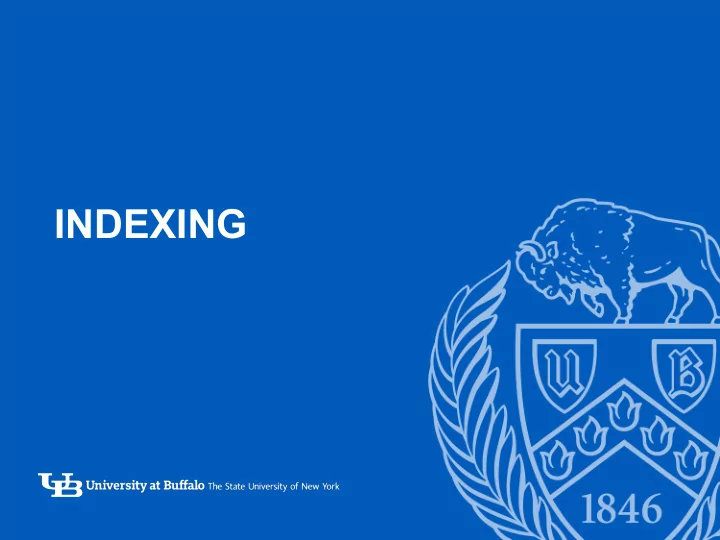

INDEXING ‘- 1
Tree-Structured Indices • Tree-structured indexing techniques support both range searches and equality searches . • ISAM : static structure; B+ tree : dynamic, adjusts gracefully under inserts and deletes. ‘- 2
ISAM • Repeat sequential indexing until sequential index fits on one page. ‘- Non-leaf File Leaf Files Overflow page Primary files ☛ Leaf files contain data entries . 3
Example ISAM Tree • Each node can hold 2 entries; no need for `next-leaf-page’ pointers. (Why?) Root ‘- 40 20 33 51 63 46* 55* 40* 51* 97* 10* 15* 20* 27* 33* 37* 63* 4
Data Pages Comments on ISAM Index Pages • File creation : Leaf (data) pages allocated sequentially, sorted by search key; then index pages allocated, then space for overflow pages. Overflow pages • Index entries : <search key value, page id>; they ‘- `direct’ search for data entries , which are in leaf pages. • Search : Start at root; use key comparisons to go to leaf. • Insert : Find leaf data entry belongs to, and put it there. • Delete : Find and remove from leaf; if empty overflow page, de-allocate. ☛ Static tree structure : inserts/deletes affect only leaf pages . 5
B+ Tree: The Most Widely-Used Index • Insert/delete at log F N cost; keep tree height-balanced . (F (fanout) = # of entries/index pages, N = # leaf pages) • Minimum 50% occupancy (except for root). Each node contains d <= m <= 2 d entries. The parameter d is called the order of the tree. • Supports equality and range-searches efficiently. ‘- Index Entries (Direct search) Data Entries ("Sequence set") 6
Example B+ Tree • Search begins at root, and key comparisons direct it to a leaf (as in ISAM). • Search for 5*, 15*, all data entries >= 24* ... ‘- Root 30 13 17 24 33* 34* 38* 39* 3* 5* 19* 20* 22* 24* 27* 29* 2* 7* 14* 16* ☛ Based on the search for 15*, we know it is not in the tree! 7
Summary • Tree-structured indexes are ideal for range-searches, also good for equality searches. • ISAM is a static structure. • Performance can degrade over time – but OK for the project (No I/O) • B+ tree is a dynamic structure. ‘- • Inserts/deletes leave tree height-balanced; log F N cost. • High fanout ( F ) means depth rarely more than 3 or 4. • Almost always better than maintaining a sorted file. • Typically, 67% occupancy on average. • Most widely used index in database management systems because of its versatility. One of the most optimized components of a DBMS. • For projects, you can implement your own indexing mechanisms • Hash-based indexes • ISAM • Partitioning • Sorting • Binary Search, etc. 8
Recommend
More recommend